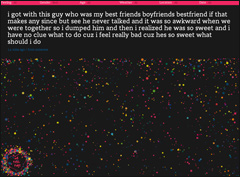Seeing as I am debating about SL and Virtual Worlds with @AJCann on a panel at FOTE09 today I thought I ought to a point by point response of his infamous blog post - as he does do a pretty good job of summarising typical objections to Second Life.
Badly designed user interface.
Fair point, I'm always accidentally closing windows I had open, and users often miss controls because they've slid off the bottom of the screen. But:
- SL has a new user interface coming and its very different and based on the demo I saw from Tom Hale ( LL CPO) a few months ago it will make a BIG difference to usability. We should see it in the next few months.
- Increasingly we're developing HUDs when we develop projects in SL, so the HUD actually becomes the primary user interface (after "in-world"), not all the SL menu choices. That means you can tailor the HUD and UI to exactly what the user needs for that exercise (whilst keeping to common conventions), significantly increasing usability.
- If you really don't like the LL interface then since the client is open source you can write your own. Many people use browsers like Emerarld and Impromptu and Katherine's excellent work. And there's Snowglobe if you want a more "official" open source browser. In fact one of the things that we've been talking about is creating a "training" client which actually rips out almost every existing SL menu option since most students don't need them, and leaves you to use HUDs to "skin" the client to what you want. Forterra's Olive takes this very slimmed down client approach and it works well for ordinary, non-power users.
Ports and Security
Got us there. Helping commercial and educational clients to get SL actually through there firewall is always a major headache, and LL know it but I can't see a solution any time soon.However you can always move to OpenSim and put that behind your firewall, or LL's own Project Nebraska. But yes, it's not an issue that some other virtual worlds have (although most commercial ones are designed for behind firewall operation anyway), and it is one that LL ultimately needs to crack. There again I remember the first days of the web when my employer (a FTSE100 plc) would only let us have the web on standalone PCs with their own dial-up connection to the Internet and no LAN connectivity for "security reasons".
New Client Versions
The days of monthly mandatory updates are long gone. I think there have only been two major releases (1.22 and 1.23) in the past year, and I don't think either was mandatory (unless you wanted to access Adult content!). Mind you I'm never again goign to complain about downloading the SL client and its PC requirements after downloading the 1.2GB Blue Mars virtual world client and discovering it failed to run on my laptop (which happily runs two SL Windlight sessions)
Lack of Imagination
Yep, we appear to spend half our lives at Daden persuading clients NOT to build a duplicate copy of their RL campus. Yes put something in their to "anchor" the experience (for Southampton University it was actually the stream through the campus), but otherwise just build the spaces you need for the sort of training and teaching you want to do. And you can even use Holodeck approaches to repurpose a space instantly (as at Coventry University), or use the same simulation space for mutliple subjects (a street scene we did for UFI worked for both customer training and basic communications skills.) We are though still only seeing quite "normal" uses of SL. We talk about a spectrum that runs something like the following:
- Level 1 - Using the virtual world purely as a remote communications/meeting tool, just using the VOIP and IM chat features, and powerpoint slides and maybe a white board
- Level 2- Using the virtual world to create simulations which would be just too costly to stage in RL - whether its a paramedic street scene, a moon landing, the inside of a jet engine or strands of DNA hundreds of meters high.
- Level 3 - "Not Possible In Real Life", doing stuff that you can ONLY do in a virtual world, usually because in the real world we have things like gravity, or the inability to create 3D holographic projections or perfect robots.
I'd guess that about 50% of educational projects are at Level 1, 45% at level 2 and only 5% at level 3. But this isn't an issue with SL, it about people lack of familiarity with the possibilities of the system - but that familiarity will come, and with it more creative applications.
Cost
There can only be two real commercial reasons for using virtual worlds:
- They let you do the same level of education for less whole cost
- They let you do better education for the same whole cost
The commercial sector appears to be better at tracking ROI for virtual world education than the academic sector. The recent Serious Virtual Worlds conference at the Serious Games Institute in Coventry had a whole host of commercial ROI studies - things like the Highways Agency saving around £65,000 for each day of training they did in the virtual world instead of in RL. Even in Academia there are some good quantitative studies emerging - one from Imperial College (presented at ReLive I think) showed that for their "operating theatre induction" students who undertook the induction in Second Life not only did better than those who had the traditional lecture based induction, but also did better than those who had their induction in a real operating theatre.
As a "firm of developer building stuff" (and probably having worked in SL with more UK educational institutions than any other company) you could expect us to take exception to the idea that universities are "sub-contracting pedagogy" and "can't use the tools". We always work closely with the front-line educators, and the closer we are to the educators then usually the better the project. We understand some of the pedagogic principles, but there is no way that we manage that side - these are joint projects. Also almost every project we have done has involved skills transfer - so at the end of the project the university staff (and even some students) can manage, maintain and develop the system. Indeed one of the students from the original Coventry project now runs her of SL development business.
And of course through the support of JISC we have been able to create tools like PIVOTE that make creating and maintaining virtual world exercises even easier, and release them as licence-free open-source back to the community. PIVOTE has now had over 120 downloads of its server code, and we host over 20 institutions on our PIVOTE hosting service, and we've had emails from institutional users as far away as Canada and Argentina!
Online Identity
It is a fascinating debate about whether students should have a different identity in SL, or their RL indentity. But SL hasn't forced you down the different identity route for a couple of years. Through the Registration API you (or we!) can create a set of SL registration pages on your own Intranet. You then ask students just to enter their real world first/last name, and then you then automatically concatenate them to create the SL account name with a common bespoke surname. So for instance as David Burden I could have an "office" account of DavidBurden Daden (eat your heart out Lindens!). You could and even bypass the sign-up process completley and just fire your whole student database at the RegAPI and auto-create all the accounts - and bypass any issues about creating multiple accounts from the same IP address! And with OpenSim the possibilities are even greater.
.
And if you really want your own face on your avatar there are several third party applications which wil let you do it. BUT the results are generally awful. I still think that well crafted SL avatar still looks far better than any of the virtual worlds that try and do "real image" faces. Image is important though - the QWAQ business meeting virtual world started out with the "head in a jar" model (actually more like "head on a Lego Minifig") and vehemently defended their decision to avoid "real" avatars. But they have now introduced real avatars and in their recent publicity shots to accompany their re-branding as Telepace (an equally awful name but for different reasons) only about 1 avatar in 10 is a minifig.
Data Portability
Does he mean Data or 3D Objects?
For 3D objects yes its been that case that what's built in SL stays in SL, but thats mainly becuase the prim based model was needed to make the build process an in-world experience that could be learnt in minutes - and that is why SL has been such a creative place and I for one would rather have creativity than portability - at least at first. But SL is growing up. In OpenSim we're already seeing import and exprt tools emerging, and some can be used with SL itself. And in 2010 we've been promised mesh import into SL itself- I've seen the demo and it looks awesome. SO we might have the best of both worlds - high definition builds being done in 3D Studio Max and imported into SL, but nice simple build tools still in SL itself. And remember that none of the other virtual worlds let you export buildings - you create them outside the platform in Collada or 3DS or whatever and then bring them into the world, and re-import if you want to change anything.
I'm actually more concerned with data, and here the trick is to actually keep as much code and ALL data on the web, and treat SL purely as a user interface. LSL is a SCRIPTING language, you aren't meant to be building big applications with it. Use robust tools on web servers (like Java or C# or even Perl) to create your applications and store your data, and then use the excellent llHTTPRequest call and the new HTTP-In event to move commands and data as required between SL and the web. We've used that approach for years and found it pretty much 100% reliable. That is how we built PIVOTE and our chatbots, and Datascape and our Navigator web browser. And of course the by-product of this is that your "application" is now a web service, so you can potentially create interfaces for ANY virtual world, or for the web, or for FLASH or even an iPhone.
Sleaze
I hate to have to say it yet again but have you seen some of the sites on the web? We don't not use the web because of the porn sites - we just avoid them. The same in SL - and even easier now that adult content has its own continent. In fact we are increasingly seeing our clients build not only on private islands, but also with their own registration pages (see above) and their own orientation - so their users just aren't exposed to sleaze. You can take things even further, there's a switch we can throw in the RegAPI which means the student accounts can't even leave the University island - making things safe still. And for the ultimate level of safety you can even customise the client as described above so there aren't any search or map functions that might show students content that you want to hide from them, even if they can't get to it.
There are however two remaining issues, both of which we've flagged with Linden Lab and hope to progress with them:
- Even if you create an account through the RegAPI you have to maintain it (like changing password) through the main SL web site. This might not have any sleaze but its focus is undoubtably on dancing and partying not studying. So we've asked LL if ultimately the RegAPI can be extended to cover account management functions (so we can do client branded account management pages), and if in the mean time they can put up a "neutral" skin for the account management pages on the SL@Work/SLGrid microsite that we can deep link to - and maybe even "hide" in a client branded frame.
- The separation of Teen and Main Grid causes educators (and others) real problems, and with the move of Adult content off of the main grid is almost an anachronism. Other similar virtual worlds don't have this distinction (Active Worlds is probably closest to SL in many ways, and has run far longer that SL with purely a voluntary flagging of sims as PG/15/18). Whilst we hope that ultimately LL merges the two grids there is in the meantime a lot of scope to let private islands owners use the RegAPI to lock accounts to their sim and to manage their own users - regardles of age.
Other Points
AJCanns does recognise that virtual worlds do have their merits - in particular for carbion reduction. He doesn't though think that they make good conferencing tools, he prefers Skype and Eluminate. But they are different types of tools for different uses. Yes I use Skype a lot, mainly for 1:1 calls, in group calls it suffers the same problems as any audio conference (all disembodied voices), and you need additional apps if you want to start sharing presentations, documents and the like. With virtual worlds you get a far better sense of the participants, of it being a shared event, you can share information and 3D models (the next SL iteration will have a fully usable web browser including Google Docs sharing), and anecdotal evidence is suggesting that just by having a virtual location for the meeting you remember the content far better.
Google Lively - well that died. The idea of a simpler 2.5D virtual world is fine, and can work alongside a richer environment like SL. We've been playing with Metaplace and really enjoy it. More importantly we can take our applications like PIVOTE and chatbots and drop them straight into Metaplace - so Metaplace and SL users are accessing the same applications and the same data. Others have already done SL-to-Metaplace chat bridges, and with the new Media API it is conceivable that you could have Metaplace running on a screen inside of SL!
World of Warcraft - as I game I find it boring (even my kids do), but lots of people like it, and yes I can see that for some requirements its an interesting space to teach and learn it. But its NOT a true virtual world. You can't create content or applications, you can only bend the game so far.
Conclusions
OK I've been writing this since Birmingham and we're almost at Euston so time to finish off!
The feeling I get reading AJCanns post is that he is just not aware of what SL can really do nowadays. It sounds like he hasn't been really USING it much recently, and that he's only been exposed to some relatively basic "Level 1" educational builds. Yes we have a long way to go with how we use virtual worlds, but to my mind, and to many people I speak to, SL may have its faults but it's a far better implementation of the sort of virtual world we want to end up with than ANYTHING else out there. Interestingly none of the new virtual worlds that have luanched in the last 5 years have tried to do what SL did - create a completely user malleable virtual world. That's a tough thing to do (which is why SL used to have the stability issues it did) - but it's the RIGHT thing to do. And with with growing OpenSim community to push Second Life even further forward then the future can only be bright.
I'm often asked "is Second Life going to be 'the one', or will it be replaced by something else?". I don't know if SL will be the one, but I am sure that when we reach the "final" virtual world solution, the 3D equivalent of the web, we will see more of Second Life in its spirit and design than any other virtual world.
***Imported from old blog***


















